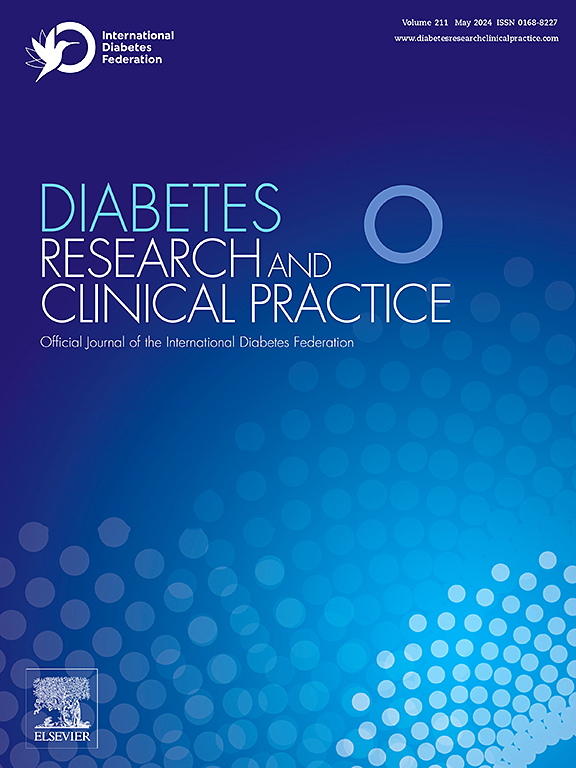Impact of continuous moderate-intensity aerobic exercise on glycemic control according to different phases of the menstrual cycle in females with type 1 diabetes
IF 6.1
3区 医学
Q1 ENDOCRINOLOGY & METABOLISM
引用次数: 0
Abstract
Aim
To assess the effects of continuous moderate-intensity aerobic exercise (CONT) on glycemic control in women with type 1 diabetes (T1D) across different phases of the menstrual cycle.
Methods
Twenty-five women with T1D completed two 30-minute CONT sessions: one during the follicular phase and the other during the luteal phase. Glycemic control was assessed during exercise by plasma glucose analysis and at 24 h post-exercise by continuous glucose monitoring.
Results
A decline in blood glucose levels was observed after exercise, regardless of menstrual phase, from approximately 155 mg/dL to about 110 mg/dL. In the 24 h following exercise, the incidence of hypoglycemia was low (less than 2 %); in contrast, exercise in the luteal phase tended to increase hyperglycemia compared to the previous 24 h (from 38.2 % to 44.2 %), as well as compared to the follicular phase, with higher mean blood glucose levels observed.
Conclusion
CONT has an immediate glucose-lowering effect regardless of menstrual cycle phase. However, while in the follicular phase TIR remains stable, in the luteal phase, it declines, with a corresponding increase in hyperglycemia, supporting the idea that exercise-induced glucose regulation varies across menstrual phases, highlighting the potential need for insulin dose adjustments depending on the cycle’s phase.
持续中等强度有氧运动对女性1型糖尿病患者月经周期不同阶段血糖控制的影响
目的 评估持续中等强度有氧运动(CONT)在月经周期不同阶段对 1 型糖尿病(T1D)女性患者血糖控制的影响。方法 25 名 1 型糖尿病女性患者分别在卵泡期和黄体期完成两次 30 分钟的 CONT 运动。通过血浆葡萄糖分析评估了运动期间的血糖控制情况,并通过连续血糖监测评估了运动后 24 小时的血糖控制情况。结果无论月经期长短,运动后血糖水平均从约 155 毫克/分升降至约 110 毫克/分升。在运动后的 24 小时内,低血糖的发生率很低(低于 2%);相反,与前 24 小时相比,黄体期的运动往往会增加高血糖(从 38.2% 增加到 44.2%),与卵泡期相比,平均血糖水平也更高。然而,在卵泡期,TIR 保持稳定,而在黄体期,TIR 下降,高血糖相应增加,这支持了运动诱导的血糖调节在不同月经周期阶段有所不同的观点,强调了根据月经周期阶段调整胰岛素剂量的潜在必要性。
本文章由计算机程序翻译,如有差异,请以英文原文为准。
求助全文
约1分钟内获得全文
求助全文
来源期刊

Diabetes research and clinical practice
医学-内分泌学与代谢
CiteScore
10.30
自引率
3.90%
发文量
862
审稿时长
32 days
期刊介绍:
Diabetes Research and Clinical Practice is an international journal for health-care providers and clinically oriented researchers that publishes high-quality original research articles and expert reviews in diabetes and related areas. The role of the journal is to provide a venue for dissemination of knowledge and discussion of topics related to diabetes clinical research and patient care. Topics of focus include translational science, genetics, immunology, nutrition, psychosocial research, epidemiology, prevention, socio-economic research, complications, new treatments, technologies and therapy.
 求助内容:
求助内容: 应助结果提醒方式:
应助结果提醒方式:


